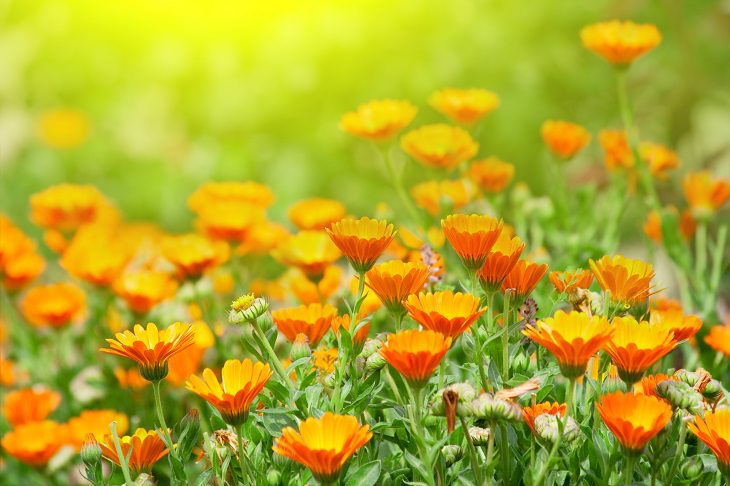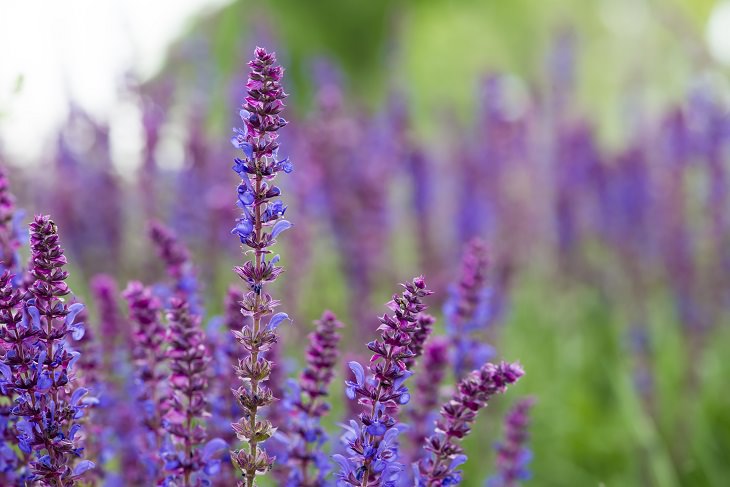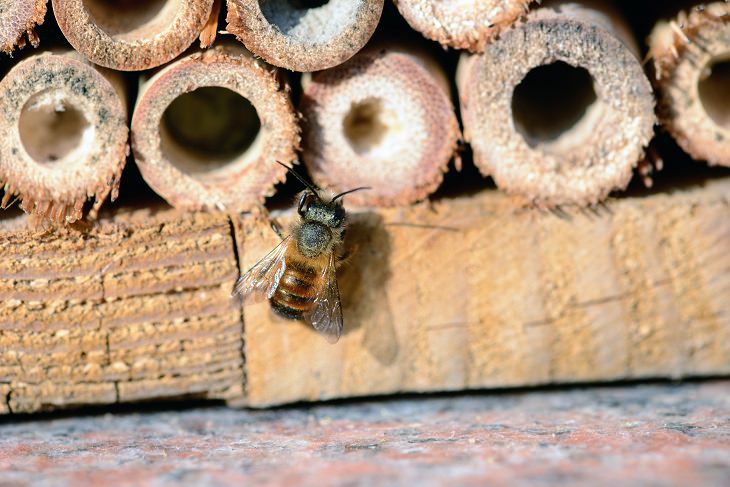
Planting Bee-Friendly Flowers
1. Plant Flowers Native to Your Area

Plant Flowers with Single Petals
Flowers with a single row of petals, rather than flowers with more than one row, are more attractive to bees. Single-petaled flowers contain more pollen than other flowers, so they provide a little more food for hungry honey bees. It’s also much easier for bees to reach the pollen when there is only one row of petals to crawl across. Here are a few flowers that bees really love:
• Asters
• Calliopsis
• Clover
• Cosmos
• Crocuses
• Dahlias
• Foxglove
• Geraniums
• Hollyhocks
• Hyacinth
• Marigolds
• Poppies
• Roses
• Snowdrops
• Sunflowers
• Zinnias

These particular colors attract bees more than oranges, pinks, and reds do. Your garden doesn’t have to be all yellow, blue, and purple, but having a good amount of flowers with these hues will keep the bees in your yard.
3. Plant Flowers That Bloom in Sequence
If all your flowers bloom at once, the bees will have a nice feast, then run out of food before the summer is over. Therefore, you should plant a variety of flowers that will bloom throughout the spring, summer, and into the fall in order to keep the bees in your garden fed and happy.
4. Plant Flowering Fruit and Vegetable Plants
Berries, melons, cucumbers, squash, and fruit trees, especially cherry trees, all produce fragrant flowers and fruit that bees love. Bees absolutely adore the following fruit and vegetables:
• Blackberries
• Cantaloupe
• Cucumbers
• Gourds
• Cherry trees
• Peppers
• Pumpkins
• Squash
• Strawberries
• Watermelons
5. Plant Herbs That Attract Bees

If you have some space for a small herb garden, that’s another great way to attract some bees. Here’s a list of herbs that bees love:
• Bee balm
• Borage
• Catnip
• Coriander
• Fennel
• Lavender
• Mints
• Rosemary
• Sage
• Thyme
Making Your Yard a Bee Haven
1. Let it get a Little Wild
If your grass is close-clipped, every stick has been picked up, and there’s not a muddy spot to be found, bees will have difficulty finding a home in your yard, no matter how many wildflowers you plant. Bees are wild creatures who need wild habitat to survive. If you want bees to take up residence in your garden, do the following:
• Leave some open, meadow-like spaces in your garden.
• Leave an area un-mowed and let wild clover grow. If you don’t have clover in your yard, scatter some white clover seed over the area in the fall.
• Leave a small brush pile and some leaves lying where they fell. Bees will use them to make a home.
• Leave patches of exposed dirt that turn to mud when it rains. Some bees live underground and will thank you for access to mud they need.
2. Make a Bee Bath
Bees have difficult using birdbaths, because they aren’t able to land in deep water. They need an island to land on so they can walk to the edge and take a drink without drowning.
To make a bee bath, take a wide, shallow dish or tray and line the edges with flat rocks. Pour water over the rocks and into the bottom of the tray. Place it in your garden near the flowers that attract the most bees. They will be able to land on the rocks and access the water.

4. Stop Using Pesticides of Any Kind
Bees are susceptible to pesticides and other chemicals sprayed and used in the garden. You should aim to have a pesticide-free garden and use pest-ridden remedies that are natural and not reliant on chemicals. If you do spray your plants, only do so after dusk, when pollinators are least active. Avoid using chemicals that are known to harm bees.
5. Plant Flowering Trees to Attract Bees
Trees provide bees with large amounts of food when they’re in full bloom. They are also a fantastic addition to the landscape. If you’re in North America, some good trees include:
• American Basswood
• Southern Magnolia
• Sourwood
• Redbud
• Crabapple
• Locust
• Serviceberry
• Tulip Trees
Source: wikihow
Images: depositphotos